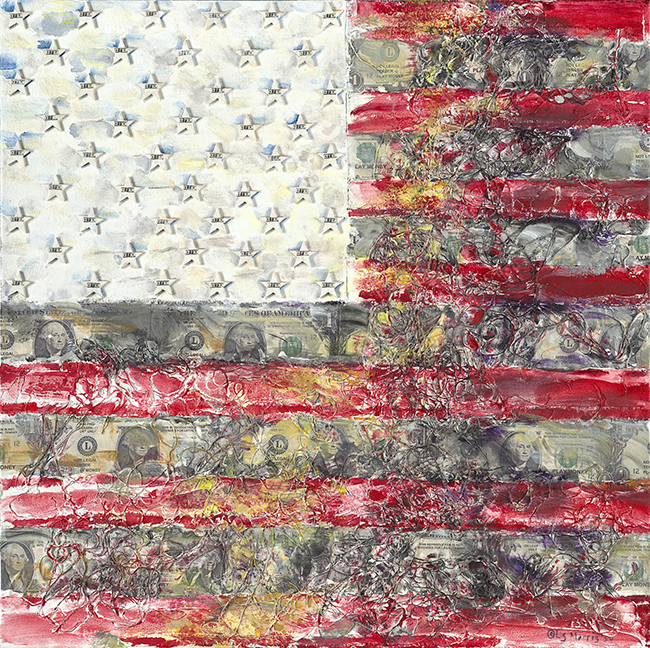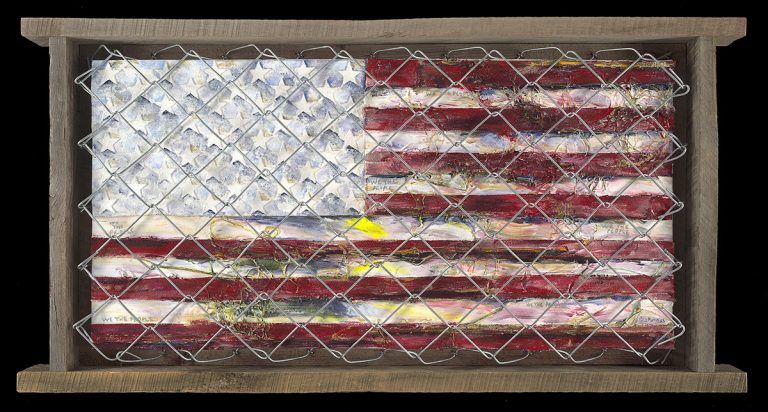L. Scooter Morris is an artist who delves deep into sensory experiences, capturing the essence of moments and turning them into lasting works. Known as a “sensory illusionist,” Morris uses her talent to shape fleeting impressions into images that resonate with a powerful sense of presence and depth. Her artwork, particularly her “Sculpted Paintings,” fuses color, light, and texture to create immersive pieces that don’t merely depict scenes but instead invite the viewer to step inside a layered narrative. Each piece seeks to capture a small fragment of reality and, through it, reveal something greater—often highlighting the subtle and complex interplay between our experiences and the broader social landscape.

The term “Sculpted Paintings” perfectly captures Morris’s unique approach. Her artworks go beyond standard two-dimensional canvases, transforming into tactile, layered experiences. Mixed media and surface variations bring life to the imagery, enhancing its sensory impact. Her art has a way of connecting to viewers, not just on an aesthetic level but as a call to engage with current issues—especially those related to justice and equality. At a time when society is constantly grappling with change, Morris’s art provides a platform for open dialogue and reflection, sparking conversations that resonate deeply.
One such artwork, titled Adornment, exemplifies her approach to blending message and medium. This 36×36” piece incorporates replicas of currency and small firearms, symbolic elements that hint at the influences shaping contemporary culture. Adornment speaks to the attachments that society forms, especially regarding material wealth and the invasive, often detrimental impact of such values on our political and social fabric. In a world increasingly driven by wealth and power, this piece questions where the line falls between influence and corruption, and whether we’re aware of the impact these forces have on our everyday lives.

Another work in her portfolio, Dark Money Everywhere, is part of a series examining the role of money in politics. This 30×30” piece, fifth in the Dark Money series, delves into the often hidden, pervasive influence of wealth on political decision-making. Morris channels her observations of this dynamic into her work, addressing the manipulation of the political system and how it subtly (and sometimes overtly) shapes the choices we, as a society, make. By drawing attention to this issue, Morris’s piece challenges the viewer to reflect on the unseen yet potent forces at play in democracy today.

Then there’s Of Our Own Making, a 19×37” painting that explores America’s political identity. In this piece, Morris uses the American flag as a backdrop, inscribing it with “We the People” in various locations to evoke the spirit of history while simultaneously questioning our present. Her work encourages a look back on both distant and recent events, exploring how the ideals of democracy and freedom are interpreted in today’s context. It’s a layered reminder of the responsibilities that come with those ideals and prompts a contemplation of how collective actions have shaped—and continue to shape—the nation’s journey.
Morris’s work stands at the intersection of art and activism. It is art with a purpose, intending to foster conversations that may otherwise be overlooked. By addressing pressing issues such as social justice, political integrity, and equality, she brings a reflective honesty to her creations. Each piece becomes a snapshot of the cultural and societal tensions we experience, making her work not only beautiful but meaningful. Her “Sculpted Paintings” feel particularly relevant in a time where society’s values and aspirations are frequently questioned, and her pieces serve as reminders to remain engaged, vigilant, and thoughtful in the face of change.
In her exploration of sensory illusion and reality, Morris skillfully brings the viewer into the experience. She lets us feel the texture of her work and see the way light plays across each surface, making her pieces accessible on a visceral level. This careful construction allows her to communicate complex ideas in a way that feels both personal and universally relatable. Her art speaks not just to individuals but to the broader society, mirroring back the issues that many wrestle with privately.
Through her work, Morris shows that art can be more than a representation of beauty—it can be a reflection of the truths we may prefer to avoid, a catalyst for conversation, and a space for exploring our individual and collective roles in shaping the world around us.

